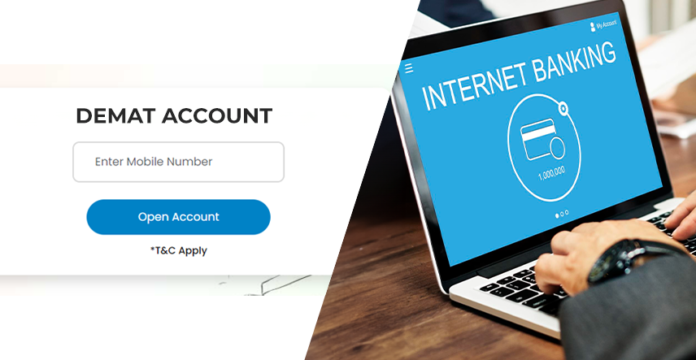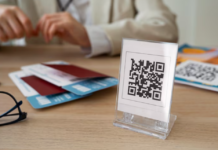Opening demat account is the first step toward investing in India’s dynamic securities market. It’s like creating a digital vault where you can securely store your financial assets. However, simply opening demat account isn’t enough. For an effective online demat account, you need to understand how to use your online demat account and the intricacies of the securities market.
Once you’ve mastered demat account usage, you can explore various trading app and choose the one that best suits your investment style and goals.
Let’s explore demat accounts in more detail:
- Which is the best trading app for a demat account?
- What is a demat account?
- How to open a demat account?
- What are the key advantages of a demat account?
- How to use a demat account for trading?
By understanding these aspects, you can make informed decisions and embark on your investment journey with confidence.
What Is Demat Account And what Is The Use Of It
ATrading demat account is primarily used to store and manage securities in electronic form. This eliminates the need for physical certificates, making transactions faster, more efficient, and secure.
Here are some specific uses of demat accounts:
- Holding securities: Demat accounts hold various securities like shares, bonds, and mutual funds.
- Buying and selling securities: You can easily buy and sell securities through your demat account.
- Receiving dividends and interest: Dividends and interest on your securities are credited directly to your linked bank account.
- Tracking investments: You can monitor your investments, track their performance, and receive updates on market movements.
- Online trading: Many demat accounts are linked to trading platforms, allowing you to trade securities online.
In essence, when you open demat accounts online, you get a convenient and efficient way to manage your investments in the Indian securities market.
How To Link Your Demat Accounts To Bank Account
Linking your demat account to your bank account is a crucial step for receiving dividend payments, interest income, and proceeds from the sale of securities. Here’s a general guide on how to link your accounts:
1. Gather Required Information:
- Demat account details: Your demat account number, DP ID (Depository Participant ID), and the name of your depository participant (DP).
- Bank account details: Your bank account number, IFSC code, and the name of your bank.
2. Visit Your DP’s Website Or Branch:
- Log in to your demat account online or visit your DP’s branch.
- Look for the option to link your bank account.
3. Provide Bank Account Details:
Enter the required details of your bank account, including the account number, IFSC code, and bank name.
4. Verify Your Bank Account:
- Your DP may request you to verify your bank account. This could involve:
- Receiving a confirmation SMS or email.
- Transferring a small amount from your bank account to your demat account.
5. Confirm Linking:
Once the verification is successful, confirm the linking of your bank account to your demat account.
The exact process may vary slightly depending on your DP and bank. It’s always advisable to refer to the specific instructions provided by your DP or contact their customer support for assistance.
Additional Tips:
- Multiple bank accounts: You can link multiple bank accounts to your demat account for convenience.
- Update information: Ensure that your bank account details are accurate and up-to-date to avoid any issues with payments.
- Security: Always prioritise the security of your demat and bank accounts. Avoid sharing sensitive information with unauthorised parties.
By following these steps, you can successfully link your demat account to your bank account and enjoy the benefits of automated payments.
How To Do Trading In Demat Account
Trading in your demat app involves buying and selling securities like shares, bonds, or mutual funds. Here’s a detailed guide to help you get started:
- Choose a Reliable Broker: Select a reputable broker that offers online trading services. Consider factors like brokerage fees, customer support, and platform features. Look for a broker with a good track record and positive reviews.
- Link Your Demat Account to Your Broker: Provide your demat account details to your broker to establish a link. This allows your broker to access your demat account for trading. The process usually involves providing your DP ID (Depository Participant ID) and demat account number.
- Research and Select Securities: Analyse companies or sectors you’re interested in. Consider factors like financial performance, market trends, industry outlook, and risk tolerance. Use tools like financial news, research reports, and company websites to gather information.
- Place an Order: For this you need to do the following:
- Log in to your broker’s trading platform.
- Choose the security you want to buy or sell.
- Specify the quantity, price, and order type (market, limit, stop-loss, etc.).
- Place the order by clicking the “Buy” or “Sell” button.
- Monitor Your Trades: Track the status of your orders and the performance of your investments. Use your broker’s platform to monitor real-time quotes, charts, and market news.
- Manage Your Portfolio: Regularly review your investments and make adjustments as needed. Consider factors like diversification, risk management, and investment goals. Use portfolio analysis tools to assess the performance of your investments.
Tips for Successful Trading
- Start small: Begin with a small amount to gain experience before investing large sums.
- Learn and practice: Educate yourself about the securities market and practice trading strategies. Consider taking online courses or attending workshops.
- Be patient: Investing is a long-term endeavour. Avoid impulsive decisions and focus on your investment goals.
- Diversify your portfolio: Spread your investments across different asset classes and sectors to manage risk.
- Stay updated: Keep track of market news, economic indicators, and company announcements to make informed decisions.
Remember, trading involves risks. It is essential to conduct thorough research and understand the potential risks before making any investment decisions. Consider consulting with a financial advisor if you have any doubts or need personalised guidance.
Conclusion
In conclusion, trading in your demat account offers a gateway to the Indian securities market. By understanding the basics of demat accounts, conducting thorough research, and making informed decisions, you can navigate the market effectively and achieve your investment goals. Remember, investing involves risks, and it’s essential to approach it with patience, discipline, and a long-term perspective.




